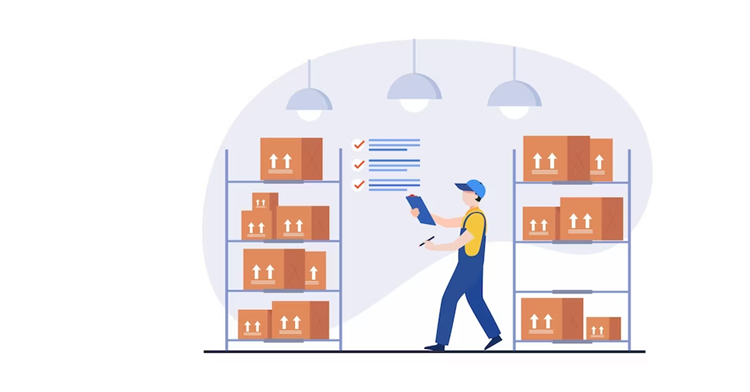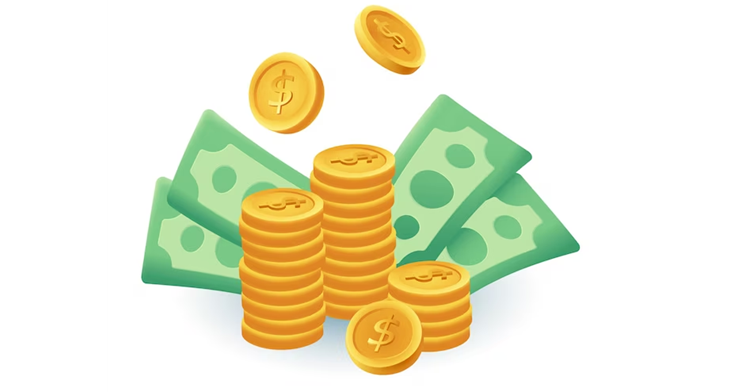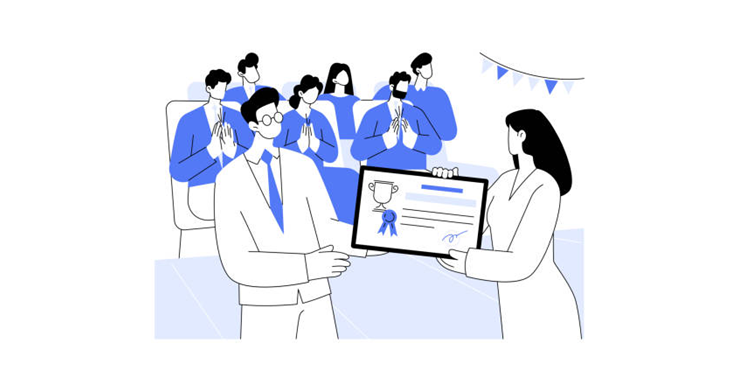Tailored strategies to motivate blue-collar employees — design reward and recognition systems that respect the realities of frontline employees, drive inclusion, and boost productivity
1. Blue-collar employees, who are essential to the smooth operation of any organization, often go unrecognized for their contributions.
2. Recognizing and rewarding these employees is not just about fairness and boosting their self-esteem; it’s about creating a sense of belonging.
3. Best practices for recognition include verbal appreciation, monetary rewards, digital tools for immediate recognition, showcasing winners on display boards, and organizing award ceremonies.
4. Tailoring rewards to meet the unique needs of blue-collar workers helps keep them motivated and productive, fostering a culture of inclusivity.
Organizations primarily focus on their white-collar employees, including office and supervisory staff. However, organizations need to pay equal attention to the rewards and recognition of blue-collar employees, who are integral to the workforce.
A Harvard Business Review analysis concluded that people working blue-collar jobs report lower levels of overall happiness in every region around the world.
Blue-collar employees often work silently behind the scenes, operating machines, delivering goods and services, performing repairs and maintenance, ensuring workplace security, and undertaking other tasks integral to business operations.
They are the backbone of every organization but sadly do not get sufficient credit or recognition for their contribution.

The workforce in an organization comprises professionals in various roles and functions.
They can broadly be classified into two main categories namely white-collared and blue-collared employees.

White-collar employees generally comprise those who work in professional, supervisory, managerial, and administrative roles within an organization.

On the other hand, members of the workforce, who work primarily in roles that require physical effort to perform their jobs are classified as blue-collar employees.
These employees are named so because most are required to wear uniforms, coveralls, and protective gear.
In general, they include skilled workers in manufacturing, mining, construction, logistics, and field services.

Blue-collar employees want to be acknowledged and appreciated for their hard work, as white-collar employees are.
Organizations must recognize their contribution to the business, even though these employees might handle hands-on tasks.
Hence, making them an integral part of the employee rewards and recognition program is essential to keep them motivated and maximize their work quality and output.

Rewarding and recognizing blue-collar employees is crucial for fostering a sense of fairness and equality within the workforce.
Such gestures help strengthen these employees’ sense of belonging and make them more appreciative of their employers.
Appreciating these employees, who work at the ground level, improves the overall productivity of the organization which helps enhance its success.
Recognizing blue-collar employees makes them feel doubly assured of their vital role in the organization’s success.

The rewards and recognition offered to blue-collar employees should reflect the genuine gratitude and respect that employers have for their hard work and contributions.
Organizations should make sure that the employee recognition program highlights the importance of the tasks performed by these employees and how their contribution is important to the organization.
It should make the employees feel valued for who they are and what they contribute to the business’s success.

It is equally important to ensure that rewards and recognition boost blue-collar employees’ self-esteem.
Employees should see some value and significance in the rewards being offered rather than just a mere formality.
Therefore, employees should feel assured that they deserve the reward for their contributions to the workplace and business growth.

Organizations must ensure that rewarding and recognizing blue-collar employees enhances their sense of belonging and commitment to the organization.
Rewards tend to boost the sense of commitment and loyalty among blue-collared employees and assure them of being an integral part of the workforce.
It also helps in building a more tolerant and inclusive work environment.

At a manufacturing plant of a multinational company, workers are recognized and rewarded by their supervisors and managers through the HiFives platform.
The workmen receive these notifications on their mobile phones through WhatsApp with e-certificates. They are also credited with reward points for various awards that cover performance, demonstration of company values, quality, safety, and teamwork.
They can log in to their accounts on the HiFives platform using their mobile phones and redeem these points for any of the 350+ e-gift card brands. They receive the e-gift card details through WhatsApp.

The workers also receive automated birthday wishes through the platform. Coworkers and supervisors also receive birthday notifications. They can like and comment on posts published on the HiFives platform.
They can also send peer-to-peer recognition through the system using their mobile phones.
This company has leveraged this rewards system to integrate workers into its employee rewards and recognition program, which was previously challenging.
Organizations are often unsure how to reward and recognize their blue-collar employees.
Here are a few best practices that can help organizations enhance the overall impact of recognizing these employees:

Organizations should encourage managers and supervisors to verbally appreciate the blue-collared employees regularly.
They should also regularly give appreciation and thank-you cards whenever they spot good work.
So, employees feel assured that their work is noticed and acknowledged by their superiors.

Monetary rewards hold great significance for blue-collared employees and they prefer them over intangible rewards.
Most employees work for lower compensation and get minimal perks and benefits.
Therefore, they value receiving monetary rewards, as they can aid their financial well-being.

Organizations should consider using digital tools, such as employee reward apps, digital recognition systems, and social media platforms, to provide immediate recognition to blue-collar employees.
Also, using these digital tools helps in making the recognition much more visible among the workforce.

It is important to showcase the names and pictures of award winners on LED/ physical display boards at the workplace.
Actually, social visibility provides the winners with a sense of pride and achievement. It also makes it aspirational for other employees to emulate them.

Organizations should give out awards in floor meetings or other large gatherings, in the presence of other employees, supervisors, and management.
It gives excellent social visibility to the award winners and motivates them further.
Also read: Case Study: Employee Recognition at a Manufacturing Company

Employees performing hands-on, physical work—such as manufacturing, logistics, field service, and maintenance —often require physical effort in their tasks.
It helps convey fairness and equality, boosts self-esteem, shows gratitude and respect, and creates a sense of belonging among blue-collar workers. Their work tends to be more visible physically but less visible in recognition systems.
Monetary rewards (cash bonuses, gift cards), certificates, verbal appreciation, appreciation cards, and recognition visible to peers and supervisors.
They enable immediate recognition (via mobile apps or platforms), make recognition visible, facilitate easy redemption of rewards (e.g., e-gift cards), and facilitate peer-to-peer appreciation.
– Use simple, tangible methods (verbal praise, thank-you cards) consistently
– Publicly display award winners (display boards, shout-outs in meetings)
– Organize ceremonies or gatherings so recognition is visible to many
Challenges include limited access to email/computer systems, scheduling and shift patterns that make it hard to gather, and recognition that is often overlooked. Solutions: use mobile notifications or platforms, choose convenient communication channels, and ensure all shifts are covered.
Feeling recognized leads to greater loyalty, higher morale, improved productivity, and employees who feel that their work matters, which in turn reduces turnover.
Yes. Non-monetary rewards, such as certificates, verbal praise, peer recognition, display boards, and public acknowledgment, are meaningful—especially when combined with monetary or tangible rewards.
By applying recognition across all shifts, making criteria and processes transparent, and giving all employees access to rewards, we can rotate recognitions so that it’s not always the same few people.
Keep the system simple, visible, timely, and relevant. Recognize actual behaviors and their impact, utilize digital tools to enhance reach and immediacy, and ensure employees feel seen, valued, and part of the larger organization.
Blue-collared employees are the nuts and bolts that keep the organization running smoothly and seamlessly. Recognizing their efforts in a timely and appropriate manner is essential to keep them motivated and productive even during the most difficult times.
A one-size-fits-all policy for rewards and recognition might not work for them, as their needs differ from those of their white-collar counterparts.

Lead author: Sagar Chaudhuri, the Co-Founder and CEO of HiFives. He is an HR Tech Evangelist with over 25 years of experience in both corporate and entrepreneurial settings. Previously, Sagar has held leadership roles at companies such as Genpact, Infosys, and ICICI Bank. He has an engineering degree from IIT Kharagpur and an MBA from IIM Lucknow. Connect on LinkedIn
To stay updated on the latest HiFives blogs, follow us on Twitter (@MyHiFives)